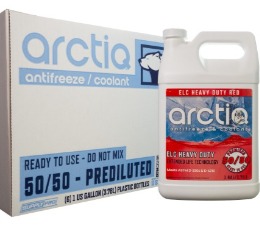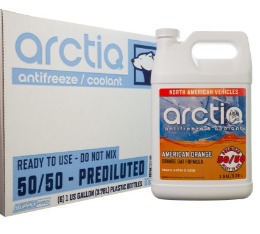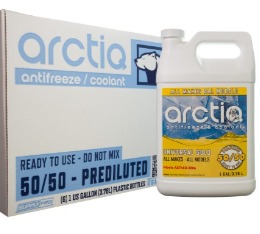Can I Use Engine Coolant Instead of Antifreeze?
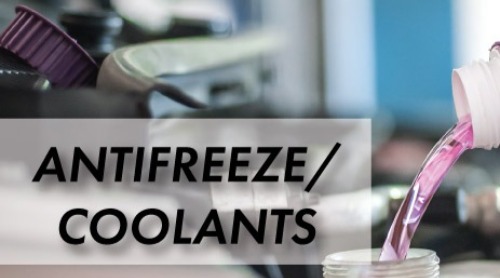
Engine coolant and antifreeze are assumed to be
substitutable terms, but they refer to two different automotive fluids. The
main differences are their ingredients and their uses. Both products are composed
of ethylene glycol. Ethylene glycol is a form of alcohol that lowers the
freezing point of water. This ingredient is poisonous to humans and animals. It
is essential to keep away from children and pets. Manufacturers add different
chemicals to the coolant and antifreeze to give them different properties.
Adding Silicates helps prevent engine corrosion, and Borates can do the same.
Still, they may raise the boiling point of the coolant mixture. Antifreeze is
an ethylene glycol base, while engine coolant is a water-based product with
ethylene glycol.
What is Coolant Composed of, and How Do I Use It?
Engine coolants keep your car's engine from overheating and running at a consistent temperature. Coolants are composed of ethylene glycol and water. Coolants always contain at least fifty percent water. Consider Arctiq™ Antifreeze & Coolant manufactured by SUPPLYPRO™. It is presented in a Concentrate or 50/50 Premixed form. 50/50 Premixed ready-to-use coolants may be more expensive, but you do not have to worry about mixtures. When purchasing a concentrated coolant, you must dilute the coolant at least fifty percent. You can do so up to seventy percent before use.
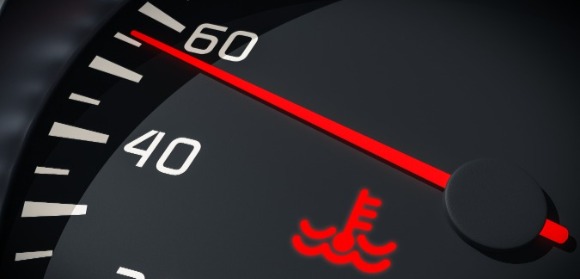
1. The temperature gauge of your vehicle consistently runs hot
2. Notice rust in the coolant reservoir
3. Frequently adding coolant/water to the coolant reservoir
4. Radiator hoses are stiff and brittle
5. The presence of steam coming out from the hood of the car
6. The heater of your vehicle is not working as efficiently
7. Sweet smell when opening the hood of your vehicle
Once you have determined the proper antifreeze or coolant for your vehicle by considering the make, model, and manufacturer's manual directions, do the following:
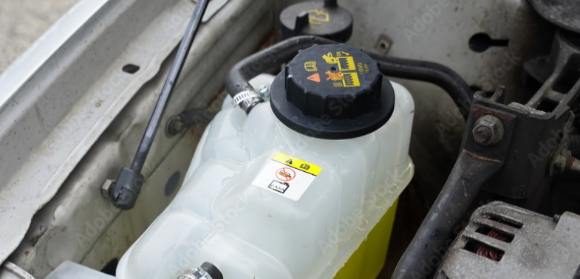
****WARNING: ENGINE MUST BE COMPLETELY COLD. MUST NOT HAVE USED THE CAR FOR SEVERAL HOURS BEFORE PERFORMING THIS TASK. IDEALLY, LET SIT OVERNIGHT BEFORE PERFORMING TASK. DANGER PRESSURIZED CAN BUILD UP AND CAUSE SEVERE INJURY OR BURNS IF PRECAUTIONS ARE NOT FOLLOWED. ***
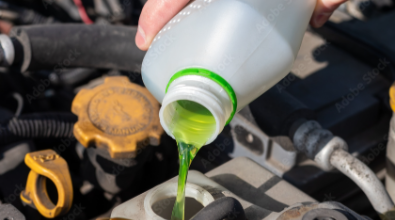
1. Locate the coolant reservoir and cap
2. Gently remove the cap
3. Coolant should be between min/max marks on the side of the reservoir
4. Do not overfill; coolant needs room to expand
5. Refit the cap firmly and check levels regularly
It is important to note that coolants are also known as your engine's radiator fluid. Please heed warnings to prevent unnecessary injuries or burns while checking and adding coolant levels. It is also essential to flush your coolant. Coolants can become contaminated over time with rust and other debris. Not changing your coolant on time can cause corrosive damage to various engine parts, leading to costly repairs. Coolants should be flushed once every two years.
To flush your coolant:
1. Follow the warning above and refer to the manufacturer's manual
2. Drain the coolant from the radiator and refill with fresh coolant
3. Do not overfill and follow proper coolant flush and fill procedures
Why Do I Need Antifreeze?

The base of antifreeze is ethylene glycol, and manufacturers add different chemicals and inhibitors to that mixture to prevent corrosion and to add other benefits. Take Arctiq™ Antifreeze & Coolant, manufactured by SUPPLYPRO™ is labeled Concentrate or Premixed 50/50. Arctiq™ Antifreeze & Coolant must dilute to a 50:50 mixture with water before use. Arctiq™ Antifreeze & Coolant Premixed 50/50 is ready to use as is. Remember, the main ingredient is ethylene glycol. It helps to absorb heat from the engine. It dissipates the heat to surrounding areas, keeping your engine at a constant temperature. Antifreeze prevents corrosion and is a barrier between the engine's metal parts. Antifreeze lowers the freezing point of water, deterring it from freezing, turning to ice, and damaging the engine. Antifreeze keeps your engine from freezing in cold climates or cold inclement weather.
What is OAT and IAT Antifreeze?
IAT, or Inorganic Additive Technology antifreeze, is a traditional coolant with ethylene glycol and a sweet scent. IAT is less expensive and widely available but only lasts for a short time. OAT, or Organic Additive Technology antifreeze, is newer, made with propylene glycol, has a bitter taste, lasts longer, and is less likely to cause corrosion


